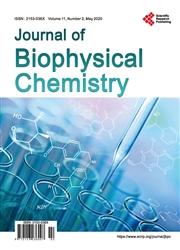Dynamic Changes in Lipid Peroxidation and Antioxidant Level in Rat’s Tissues with Macrovipera lebetina obtusa and Montivipera raddei Venom Intoxication
引用次数: 4
Abstract
We investigated the balance of free radicals in different tissues (liver, heart, brain and muscle) of rats in course of in vivo and in vitro processing by Macrovipera lebetina obtusa (MLO) and Montivipera raddei (MR) snake venoms. Chemiluminescence (ChL) levels were examined in tissue assays after incubation (at 37 °C for a period of 10 min) with venom for in vitro experiments and in tissue assays isolated of 10 min after venom injection for in vivo experiments. The TBA-test was also performed to confirm the free radical expression. The activities of antioxidant enzymes (such as superoxide dismutase and glutathione peroxidase) in isolated tissues were detected by spectro-photometry. During the in vitro processing chemiluminescence levels of tissue homogenates significantly decreased, while in course of in vivo intoxication the level of ChL was elevated in brain and liver; lipid peroxidation also increased in brain tissue, but there was no significant balance change in other tissues; the activity of superoxide dismutase mainly correlated with changes of free radical balance during intoxication. On the contrary, the activity of glutathione peroxidase showed the reverse tendencies to change. We suggest that free radicals and their oxidative stresses may play a role in the early stage of intoxication causing the so-named “spreading-effect”, which is very characteristic for the venom of vipers.大鼠粗白蝮蛇和黑蝮蛇毒液中毒后组织脂质过氧化和抗氧化水平的动态变化
本实验研究了大鼠在体内和体外加工大鼠肝、心、脑和肌肉组织中自由基的平衡情况。体外实验用毒液孵育(37°C孵育10分钟)后的组织分析检测化学发光(ChL)水平,体内实验用注射毒液10分钟后分离的组织分析检测化学发光(ChL)水平。同时进行tba试验以证实自由基的表达。用分光光度法测定离体组织中抗氧化酶(如超氧化物歧化酶和谷胱甘肽过氧化物酶)的活性。在体外处理过程中,组织匀浆的化学发光水平显著降低,而在体内中毒过程中,脑组织和肝脏的ChL水平升高;脑组织脂质过氧化也有所增加,但其他组织的平衡无明显变化;超氧化物歧化酶的活性主要与中毒期间自由基平衡的变化有关。而谷胱甘肽过氧化物酶活性则呈现相反的变化趋势。我们认为,自由基及其氧化应激可能在中毒的早期阶段起作用,导致所谓的“扩散效应”,这是毒蛇毒液的特征。
本文章由计算机程序翻译,如有差异,请以英文原文为准。
求助全文
约1分钟内获得全文
求助全文

 求助内容:
求助内容: 应助结果提醒方式:
应助结果提醒方式:


